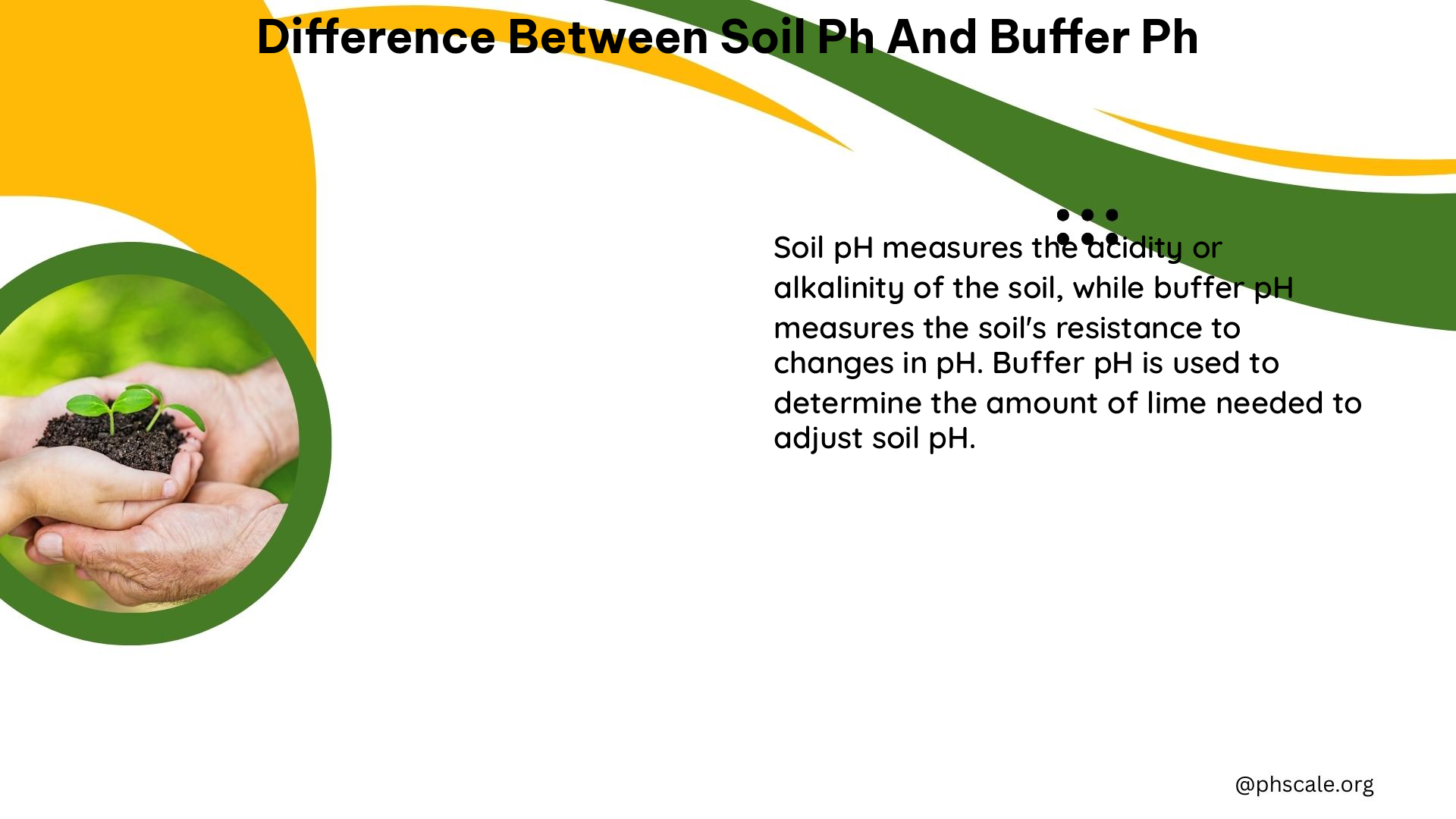The primary difference between soil pH and buffer pH lies in their measurement and impact on plant growth. Soil pH measures the active acidity or alkalinity of the soil, which directly affects plant growth, while buffer pH measures the soil’s ability to resist changes in pH and its capacity to store basic materials. Understanding the distinction between these two parameters is crucial for effectively managing soil fertility and optimizing plant performance.
Soil pH: The Foundation of Soil Chemistry
Soil pH is the measure of the active acidity or alkalinity of the soil, and it is considered the foundation of soil chemistry and nutrient reactions. It is typically measured in a 1:1 slurry of soil and water and ranges from 0 to 14, with values below 7.0 being acidic and those above 7.0 being alkaline. Most plants perform best in a slightly acidic to neutral soil pH (6.0-7.0).
Factors Affecting Soil pH
- Hydrogen (H+) ions: Contribute to soil acidity
- Aluminum (Al+++) ions: Also contribute to soil acidity
- Organic matter decomposition: Can release H+ ions, increasing acidity
- Fertilizer application: Some fertilizers can increase or decrease soil pH
Importance of Soil pH
- Directly affects plant growth and nutrient availability
- Influences the solubility and availability of essential plant nutrients
- Determines the activity of soil microorganisms, which play a crucial role in nutrient cycling
Buffer pH: Measuring Soil’s Resistance to pH Changes

Buffer pH, on the other hand, is a laboratory-generated value that measures the soil’s ability to resist changes in pH and its capacity to store basic materials. It is determined by adding a buffering solution to the soil sample, which functions like fast-acting lime. The resulting pH after the buffering solution reacts with the soil indicates the soil’s buffer capacity.
Factors Affecting Buffer pH
- Soil organic matter content
- Clay mineral content
- Cation exchange capacity (CEC)
Significance of Buffer pH
- Determines the effectiveness of liming materials in adjusting soil pH
- Indicates the amount of lime required to raise the soil pH to a target level
- Helps predict the soil’s response to the addition of acidic or basic materials
Relationship Between Soil pH and Buffer pH
- Soil pH determines when limestone is needed
- Buffer pH determines how much limestone is needed
- Soils with a higher buffer capacity require more lime to raise the pH
- Soils with a lower buffer capacity require less lime to change the pH
Practical Implications
The difference between soil pH and buffer pH has significant practical implications for soil management and plant growth.
Liming Recommendations
- Soil pH determines the need for liming
- Buffer pH determines the amount of lime required to achieve the desired pH
Crop Selection
- Choosing crops suitable for the existing soil pH is crucial for optimal growth and yield
Soil Amendments
- Organic matter addition can improve soil structure and buffer capacity
- Gypsum can be used to leach out alkali salts in high-pH soils
Conclusion
In summary, the primary difference between soil pH and buffer pH lies in their measurement and impact on plant growth. Soil pH is the measure of active acidity or alkalinity, while buffer pH is a laboratory-generated value that indicates the soil’s resistance to pH changes and its capacity to store basic materials. Understanding this distinction is essential for effective soil management and optimizing plant performance.
References:
- Spectrum Analytic. (2010). Soil pH and Buffer pH. Retrieved from https://spectrumanalytic.com/doc/library/articles/soil_buffer_ph
- Purdue University. (2014). Buffer pH. Retrieved from https://ag.purdue.edu/department/agry/agry-extension/_docs/soil-fertility/buffer-ph.pdf
- Beck’s Hybrids. (n.d.). Agronomy Talk: Soil pH vs. Buffer pH. Retrieved from https://www.beckshybrids.com/resources/agronomy-talk/agronomy-talk-soil-ph-vs-buffer-ph
- Oklahoma State University Extension. (2017). Soil pH and Buffer Index. Retrieved from https://extension.okstate.edu/fact-sheets/soil-ph-and-buffer-index.html
- Clemson University. (n.d.). Buffer pH. Retrieved from https://www.clemson.edu/public/regulatory/ag-srvc-lab/soil-testing/buffer-ph.html
